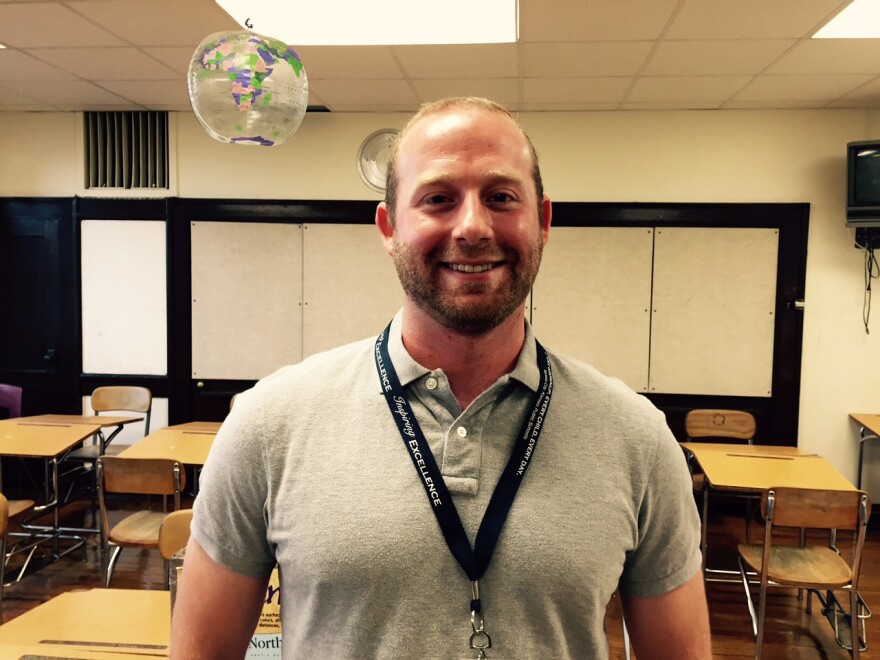This just might be the most challenging year in Kansas education in a generation.
State funding, teachers leaving the state and hiring issues are plaguing districts across the state.
The issues in Kansas classrooms run the gamut.
In some districts paraprofessionals have been cut. In others, library aids.
And many, many districts are having trouble hiring enough teachers.
Kansas City, Kansas 7th grade social studies teacher Skylar Roush, it's safe to say, is going to have a difficult year. He will average more than 40 students in each of his classes in KCK’s Northwest Middle School.
"I’ve got 32, maybe I can squeeze 34 desks right now," Roush says. It’s already hard to walk around Roush’s room in the 96-year-old building. Where kids are going to sit is a mystery right now.

To save money KCK has already laid off staff and cut back paraprofessional hours.
Northwest this year lost some students to another middle school in a redistricting, so it also lost some teachers and that’s lead to several classes with more than 40 students.
And these are Kansas City, Kansas district students, meaning most live in poverty and 45 percent are English learners.
Making their education, Roush says, that much harder.
"It makes it almost impossible to serve the individual needs of our students if I have 45 students."
The educational pain is statewide and takes different forms. Many districts can’t fill jobs.
Garden City, in western Kansas, still has a couple of dozen open positions. Wichita is trying to hire more than 250 people.
They’re raising property taxes in Lawrence to make up for less state aid. And Olathe just said it was laying off 80 people to close a $2 million dollar hole.
School Board president Rick Schier says block grant funding already has him worried about next year.
"We also know that just the cost of living is going up. We know there’s other expenses that are going up. And we know we’re not going to have anywhere else to go. We’re going to have to go back and look at cuts," he says.
Northwest Middle Principal Donnie Mitchell says if this year is bad, 2016 will probably be worse.
"What we’re going to be seeing is possibly, not possibly, we will be seeing classrooms with more students in them. One teacher can make a greater impact with 20 than having 40 all of a sudden, so that is a concern of mine."
Mark Tallman, who lobbies for the Kansas Association of School Boards, says Kansas seems to be entering a very uncertain time.
"I don’t think there’s any question that this year is beginning with a lot of concerns around our teaching force, around funding and whether the funding the districts are expecting now will come through," he says.
The block grants, supporters said, were supposed to make budgeting easier. Districts would know exactly what they would be getting for the next two years.
However, says Tallman, tax revenue is far from certain in the state so districts are already planning for midyear cuts. "The Legislature can’t send out state aid if it doesn’t have the money coming in."
Conservatives argue that schools have plenty of money, that the state has actually put more money into education and districts need to be more efficient.
But Tallman says all this comes at a time when educators are being told to improve academic outcomes.
That do-more-with-less refrain has everyone worried. "That’s the great stress that I think is being felt from the individual classroom all the way up to school boards and the state board of education."
Social Studies teacher Skylar Roush, who’s starting his fifth year as a teacher, says he senses a change in the way Kansas looks at education.
"While I was growing up I was constantly being told by my parents, by my teachers, you know, Kansas cares about education. Kansas has good public schools, it’s a value to all Kansans."


